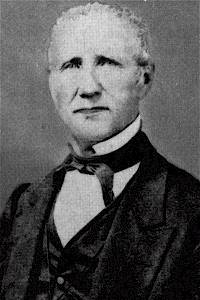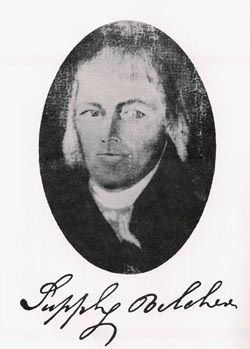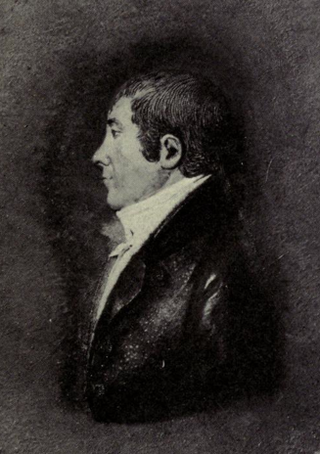Related Research Articles

A hymn is a type of song, and partially synonymous with devotional song, specifically written for the purpose of adoration or prayer, and typically addressed to a deity or deities, or to a prominent figure or personification. The word hymn derives from Greek ὕμνος (hymnos), which means "a song of praise". A writer of hymns is known as a hymnist. The singing or composition of hymns is called hymnody. Collections of hymns are known as hymnals or hymn books. Hymns may or may not include instrumental accompaniment.

Polyphony is a type of musical texture consisting of two or more simultaneous lines of independent melody, as opposed to a musical texture with just one voice, monophony, or a texture with one dominant melodic voice accompanied by chords, homophony.

Shape notes are a musical notation designed to facilitate congregational and social singing. The notation, introduced in late 18th century England, became a popular teaching device in American singing schools. Shapes were added to the noteheads in written music to help singers find pitches within major and minor scales without the use of more complex information found in key signatures on the staff.

A hymnal or hymnary is a collection of hymns, usually in the form of a book, called a hymnbook. They are used in congregational singing. A hymnal may contain only hymn texts ; written melodies are extra, and more recently harmony parts have also been provided.

William Billings is regarded as the first American choral composer and leading member of the First New England School.

Sacred Harp singing is a tradition of sacred choral music that originated in New England and was later perpetuated and carried on in the American South. The name is derived from The Sacred Harp, a ubiquitous and historically important tunebook printed in shape notes. The work was first published in 1844 and has reappeared in multiple editions ever since. Sacred Harp music represents one branch of an older tradition of American music that developed over the period 1770 to 1820 from roots in New England, with a significant, related development under the influence of "revival" services around the 1840s. This music was included in, and became profoundly associated with, books using the shape note style of notation popular in America in the 18th and early 19th centuries.

The Southern Harmony, and Musical Companion is a shape note hymn and tune book compiled by William Walker, first published in 1835. The book is notable for having originated or popularized several hymn tunes found in modern hymnals and shape note collections like The Sacred Harp.

William Walker was an American Baptist song leader, shape note "singing master", and compiler of four shape note tunebooks, most notable of which are the influential The Southern Harmony and The Christian Harmony, which has been in continuous use.
Justin Morgan was a U.S. horse breeder and composer.

Supply Belcher was an American composer, singer, and compiler of tune books. He was one of the so-called Yankee tunesmiths or First New England School, a group of mostly self-taught composers who created sacred vocal music for local choirs. He was active first in Lexington, Massachusetts, then eventually moved to Farmington, Maine. Like most of his colleagues, Belcher could not make music his main occupation, and worked as tax assessor, schoolmaster, town clerk, and so on; nevertheless he was considerably well known for his musical activities, and even dubbed 'the Handell [sic] of Maine' by a local newspaper. Most of his works survive in The Harmony of Maine, a collection Belcher published himself in Boston in 1794.

William Tans'ur was an English hymn-writer, composer of West gallery music, and teacher of music. His output includes approximately a hundred hymn tunes and psalm settings and a Te Deum. His manual A New Musical Grammar (1746) was still popular in the nineteenth century.

Oliver Holden was an American composer and compiler of hymns.
Nehemiah Shumway was an American composer of sacred music, teacher, and farmer.
Jacob French was a singing master and one of the first American composers, sometimes called Yankee tunesmiths. "A student of William Billings, French adopted Billings' innovative approach to psalmody ... His music tends to be more complex in its structure, rhythm, and counterpoint than most of his contemporaries." "Along with William Billings, he is regarded as one of the finest composer of anthems in the New England tradition." French's Farewell Anthem appears in Southern Harmony, 1835, as well as The Sacred Harp from 1844 to the present. He was born in Stoughton, Massachusetts. His brother, Edward, also composed a few tunes.
Jacob Kimball Jr. born on February 15, 1761, and died in Topsfield, Massachusetts July 24, 1826 was one of the first American composers. He played fife and drum in the American Revolutionary War and participated in Battle of Lexington and Bunker Hill.
Jeremiah Ingalls was an early North-American composer, considered a part of the First New England School.
Daniel Belknap was a farmer, mechanic, militia captain, poet and singing teacher.
Elkanah Kelsey Dare was a Mid-Atlantic schoolteacher, composer of music, and Presbyterian minister. He was among the first American composers who published music in shape notes.
Aaron Williams (1731–1776) was a Welsh teacher, composer, and compiler of West Gallery music, active in Britain during the 18th century.

The Shenandoah Harmony is a 2013 republication of the works of Ananias Davisson (1780–1857) and other composers of his era, in the format used by modern shape note singing groups. Although a number of new shape note tune books were compiled and published in the two decades leading up to the publication of the Shenandoah Harmony, this volume is notable as "the largest new four-shape tunebook published for more than 150 years." The book is named after Shenandoah Valley, whose importance in the emergence of a distinctive Southern shape-note singing tradition has been noted by many musicologists. Authentic South reporter Kelley Libby of WFAE, attending an all-day singing in Cross Keys, felt "transported to the Shenandoah Valley of the 1800s."
References
- ↑ American Writers and Compilers of Sacred Music By Frank J. Metcalf
- ↑ "American Composer Timeline". www.voxnovus.com.